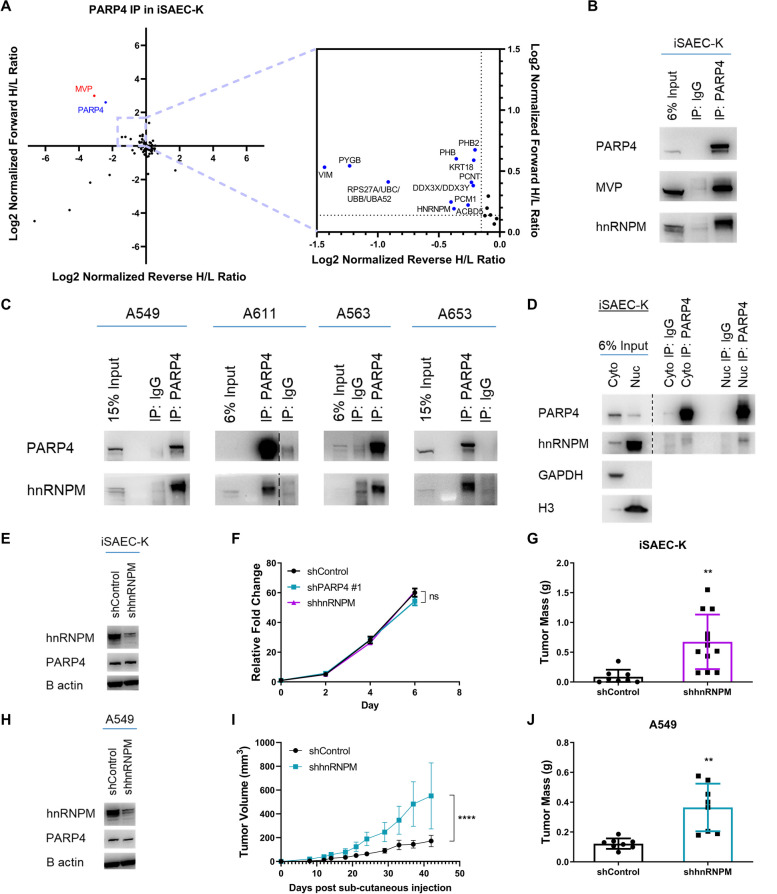Fig. 4.
hnRNPM is a potentially novel PARP4 binding partner with tumor suppressive activity in LUAD. A Log2 normalized forward and reverse SILAC Heavy/Light (H/L) ratios of proteins detected in the PARP4 SILAC co-IP mass spectrometry experiment. Candidate proteins with forward H/L ratio > 1.1 and reverse H/L ratio < 0.9 are found in the top left quadrant. The bait protein PARP4 is labeled in blue while PARP4’s known interaction partner MVP is labeled in red (left); enlarged plot area for better resolution of candidate proteins (right). B Immunoblot analysis following immunoprecipitation of PARP4 in iSAEC-K cells. C Immunoblot analysis following immunoprecipitation of PARP4 in the lung cell lines A549, A611, A563 and A653. D Immunoblot analysis following immunoprecipitation of PARP4 from the cytoplasmic (cyto) and nuclear (nuc) fractions of iSAEC-K cells. GAPDH was used as a cytoplasmic marker while total histone H3 was used as a nuclear marker. E Immunoblot analysis of hnRNPM and PARP4 levels in iSAEC-K shControl and shhnRNPM cells. F Proliferative capacity of iSAEC-K shControl, shPARP4 #1 and shhnRNPM cells as measured by the CellTiter-Glo assay. Data represent the mean ± s.e.m., n = 3. G Mass of tumors formed from iSAEC-K shControl or shhnRNPM cells after 10 weeks. Data represent the mean ± s.d., n ≥ 8. H Immunoblot analysis of hnRNPM and PARP4 levels in A549 shControl and shhnRNPM cells. I Growth curve of tumors formed from A549 shControl or shhnRNPM cells. Data represent the mean ± s.d., n = 8. J Mass of tumors in I

